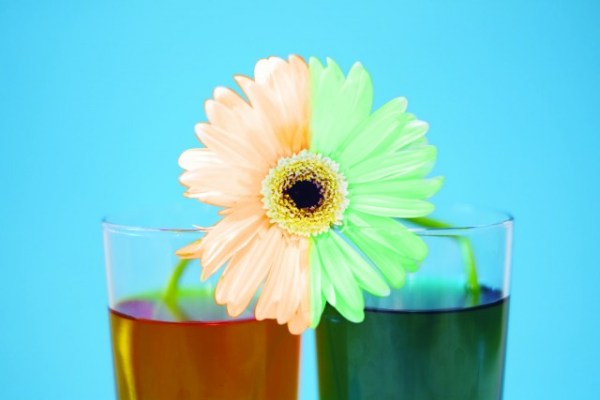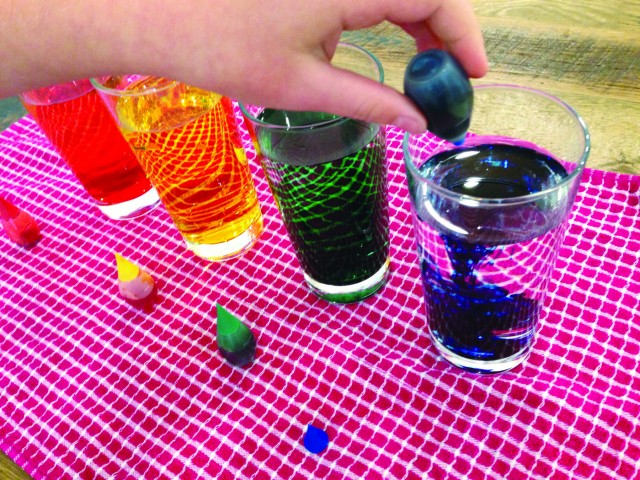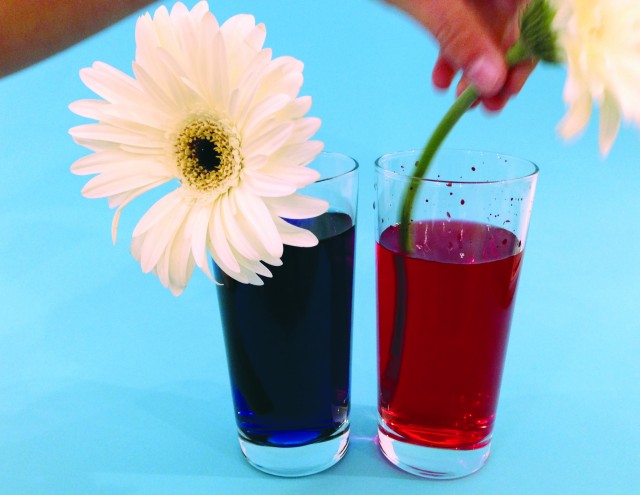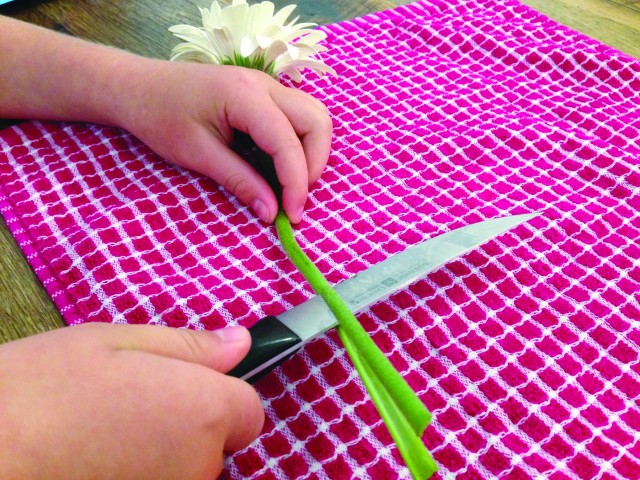Learn Plant Science Through Colored Leaves
You’ve watered plants before, right? You know how it works: You plant something, give it some water, give it some light, give it some time and voila! Beans! Or broccoli! Or flowers! But . . . how does it work? How does the water go from the dirt into the plant and on up into the flower? This experiment, will teach your kids all about plant science in a fun and simple way.
You’ll Need:
Three white flowers. We used Gerbera daisies, but you can use anything you have on hand or that is easily available at the florist or store: roses, carnations. Go pick some lawn daisies if you have them. If you don’t have flowers, celery works great as well.
Four glasses of water
Food dye: blue, yellow, green, red
Sharp knife
How to:
1. Let your little lab partner mix each color into each of your glasses, until you have four glasses of different colored water. The stronger you make the colors, the better.
2. Add two flowers to two colors of your partner’s choice and set aside. You should have two colors and one flower remaining at this point.
3. Take your last flower and have your lab partner slit the stem so that you’ll be able to put one part of the stem.
Now take the two remaining colored glasses and part the stem, placing each half of the stem into different colored glasses. In other words, your flower should now be drinking from two glasses at the same time. Got it? Good.
Note: Let your lab partners do this if you feel they’re up to it. Even the cutting. Teach tool safety and step aside if they’re comfortable with it.
4. Place the water glasses away from the sunlight and watch what happens. You’ll start to notice some fascinating results within an hour or so, as the colored water creeps up the stem and begins to color the leaves. But wait a few days and keep observing the petals for fuller color displays.
Did You Know?Xylem is the name for one type of plant tissue that carries water. It comes from the Greek word xylon, meaning “wood.” The other tissue is called phloem. It comes from the Greek word phloios meaning “bark.” Together, these tissues form the main capillary action that helps plants drink water and nutrients and survive.





No comments:
Post a Comment